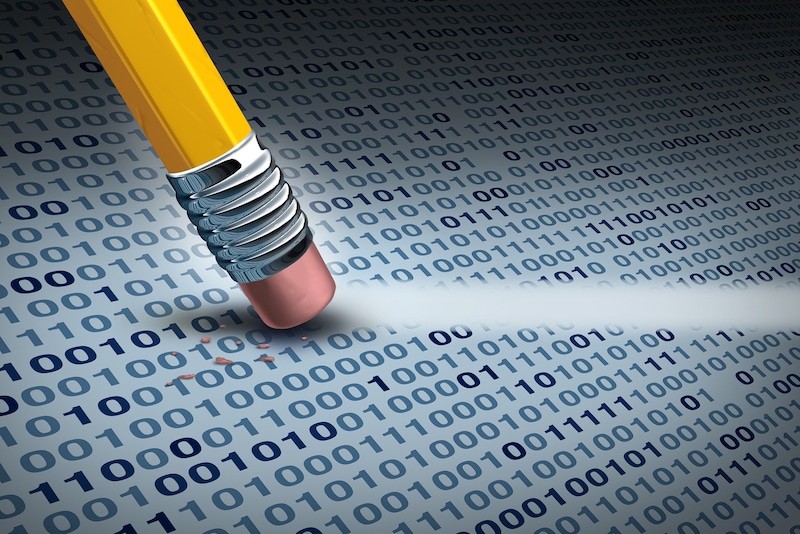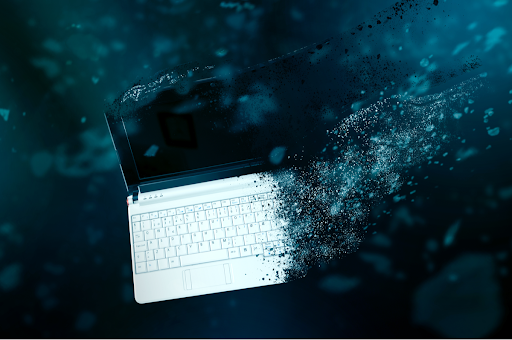How Robust Data Destruction Boosts Your Overall Cyber Security Actions
Wiki Article
Exactly How Proper Data Destruction Adds To Robust Computer Security Services and Mitigates Risks of Information Breaches
In today's electronic landscape, the significance of proper information damage can not be overemphasized, as it offers as a fundamental component of comprehensive computer safety services. By executing reliable information erasure methods, organizations not just safeguard sensitive information from unauthorized gain access to yet also bolster their conformity with governing structures - data destruction. The implications of inadequate data destruction expand past plain conformity; they can profoundly impact a company's cybersecurity posture and reputation. Understanding these measurements increases crucial questions about the practices in position and their effectiveness in an era of rising cyber hazards.Importance of Data Devastation
In today's digital landscape, the importance of data damage can not be overemphasized. As organizations significantly count on electronic properties, the prospective threats linked with information breaches and unapproved accessibility amplify. Efficient data destruction is a vital component of a detailed info safety and security approach, safeguarding sensitive information from dropping right into the hands of malicious actors.When data is no more needed, just deleting documents or formatting disk drives is insufficient. Residual information can usually be recuperated utilizing conveniently available devices, positioning significant hazards to both companies and individuals. This underscores the necessity for robust information devastation methods that make certain all data is irretrievably gotten rid of.
Moreover, regulatory conformity mandates, such as GDPR and HIPAA, stress the responsibility to secure delicate information, including its proper disposal. Non-compliance can lead to extreme lawful effects and monetary fines. data destruction. Thus, integrating efficient information damage protocols not only improves safety and security yet likewise strengthens a company's credibility and dependability

Techniques of Secure Information Erasure
Numerous effective approaches of safe data erasure can be employed to make certain that sensitive details is permanently gotten rid of from storage tools. One commonly recognized strategy is data overwriting, which entails replacing existing information with random patterns numerous times. This technique dramatically reduces the chances of information recovery, although it might not be effective against innovative forensic strategies.
Physical damage is likewise a dependable method, where storage devices are rendered pointless via shredding, crushing, or incineration. This method makes certain that information can not be recuperated by any type of ways but calls for cautious handling of dangerous products.
Finally, specialized software application devices created for secure information erasure offer functionalities that follow different erasure requirements. These devices frequently consist of attributes like verification processes to verify successful data damage.
Using these methods in mix can enhance information safety and security and reduce the threats linked with information breaches, ensuring that delicate details is not inadvertently exposed.
Legal and Conformity Considerations
The approaches employed for secure information erasure not just offer to secure delicate info yet likewise must align with legal and compliance frameworks regulating data protection. Organizations are called for to abide by numerous guidelines, such as the General Information Security Guideline (GDPR), the Health Insurance Coverage Portability and Responsibility Act (HIPAA), and the Repayment Card Industry Information Security Requirement (PCI DSS) These policies mandate certain protocols for information taking care of and damage, making certain that personal and sensitive data is irretrievably erased when no longer required.
Failing to comply with these legal requirements can lead to substantial charges, consisting of penalties and reputational damages. Additionally, organizations need to preserve documents of data damage processes, showing conformity throughout audits or examinations. This documentation not just protects versus legal repercussions however also reinforces count on with stakeholders and customers, showcasing a commitment to data protection.
Integrating lawful and conformity factors to consider into information devastation techniques is necessary for any kind of company. It reduces the danger of data violations and shows a positive approach to safeguarding delicate details, inevitably promoting a culture of safety and responsibility across the organization.
Effect On Cybersecurity Posture
Reliable information devastation considerably enhances a company's cybersecurity stance by lowering the prospective assault surface for cyber risks. When delicate information is not properly destroyed, it continues to be obtainable to destructive stars who can manipulate this information for unauthorized access, identification burglary, or company espionage. By carrying out robust information devastation methods, organizations can successfully decrease the threat of information breaches and enhance their total safety and security framework.Furthermore, the safe disposal of outdated or unnecessary information not just secures sensitive details yet additionally aids companies adhere to sector policies and standards. Failure to adequately destroy data can cause severe legal consequences and reputational damage, additional endangering a company's cybersecurity position.

Eventually, prioritizing efficient data damage is necessary for fostering a durable cybersecurity position, making sure that organizations stay watchful versus evolving cyber dangers while safeguarding their crucial properties and stakeholders.
Ideal Practices for Organizations
Implementing ideal methods for data destruction is crucial for companies aiming to protect delicate info and alleviate cybersecurity threats. First and leading, organizations should develop a detailed information damage plan that outlines procedures and responsibilities. This plan should abide with pertinent policies, such as GDPR or HIPAA, guaranteeing lawful consistency.Second of all, it is vital pop over to these guys to use approved data sanitization approaches, including data wiping, degaussing, and physical destruction, customized to the here kind of information and storage space tool. Using certified experts for information damage services boosts the integrity of these approaches.
Furthermore, organizations ought to preserve a comprehensive supply of all information storage tools, making sure that all out-of-date or replaced tools undertakes destruction. Routine audits of information devastation methods can help determine weak points and enhance compliance.
Worker training is one more critical element, as personnel must comprehend the significance of information destruction and abide by developed methods. Organizations need to document all information damage activities to give responsibility and traceability, which can be indispensable throughout audits or in the event of a violation.
Conclusion

One extensively recognized method is information overwriting, which includes replacing existing data with random patterns several times.The techniques used for secure data erasure not only offer to secure sensitive info yet likewise needs to see page line up with lawful and conformity frameworks governing information protection. These policies mandate details procedures for data taking care of and devastation, guaranteeing that delicate and personal information is irretrievably removed when no longer required.
By applying durable data devastation procedures, organizations can properly minimize the risk of information violations and enhance their total safety and security framework.
In final thought, correct data devastation is vital for enhancing computer safety services and mitigating the risks linked with data breaches. - data destruction
Report this wiki page